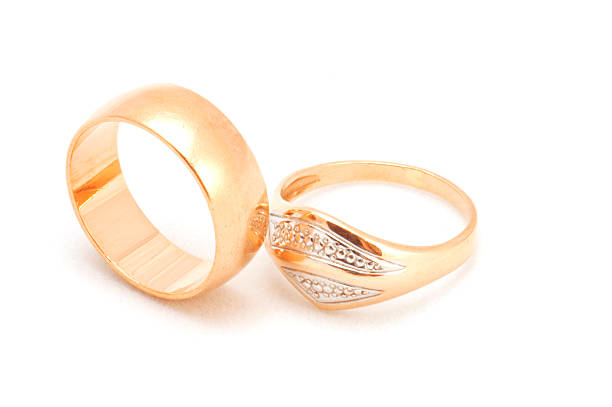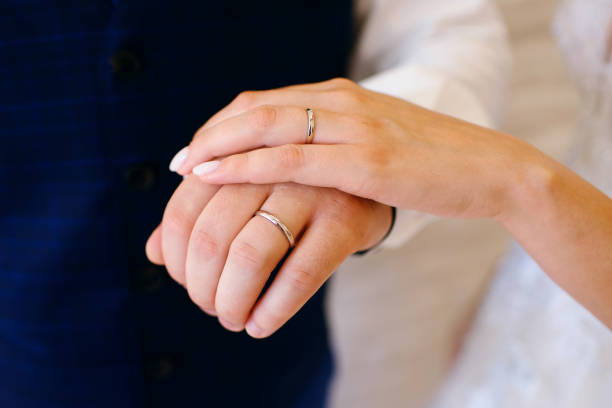Engagement rings and wedding bands have long been symbols of love, commitment, and the promise of a lifetime together.
But what is it about these simple pieces of jewelry that makes them so powerful?
Why do they continue to hold such significance in cultures around the world, even in a time when traditions are constantly evolving?
Let’s explore why these rings remain timeless symbols of lasting love.
Table of Contents
The Deep Meaning Behind the Engagement Ring
An engagement ring is much more than a sparkling accessory—it represents the promise of a shared future. The act of giving an engagement ring dates back thousands of years, with the ancient Romans believed to be the first to use rings as a sign of commitment.
However, the tradition became more widespread in 1477 when Archduke Maximilian of Austria gave Mary of Burgundy a diamond ring, setting off a trend among European aristocrats.
Diamonds, in particular, became popular for engagement rings due to their durability and brilliance.

They symbolize purity, strength, and eternity—qualities that mirror the couple’s bond. A diamond engagement ring isn’t just a pretty piece of jewelry; it’s a lasting reminder of the commitment between two people who are preparing to build a life together.
But the meaning goes deeper than the ring itself. When someone receives an engagement ring, it’s not just a piece of metal and stone—it’s a physical representation of the love and intention to spend a lifetime together.
It marks the beginning of a new chapter and sets the foundation for a lifelong partnership.
The Wedding Band: A Circle with No End
While the engagement ring symbolizes the beginning of a couple’s journey, the wedding band represents the continuation of that journey.
The circular shape of the wedding band, with no beginning or end, is a powerful representation of eternity, unity, and an unbreakable bond.
The tradition of exchanging wedding bands has ancient roots as well. In ancient Egypt, couples would exchange rings made from braided reeds as symbols of eternal love. Over time, this practice spread across different cultures and civilizations, and today, wedding bands are an integral part of wedding ceremonies across the globe.
What makes the wedding band so significant is its role during the marriage ceremony. When couples exchange vows, the wedding band serves as a tangible reminder of those promises.
Every glance at the ring brings to mind the love, commitment, and responsibility that come with marriage. It’s a constant reminder that no matter what life throws your way, you and your partner are in it together—forever.

Why Have These Symbols Stood the Test of Time?
With changing times and evolving traditions, why have engagement rings and wedding bands remained timeless symbols of love?
The answer lies in the deep emotional connection they represent. These rings are not just pieces of jewelry; they carry the weight of a couple’s love, promises, and shared journey.
Engagement rings and wedding bands serve as daily reminders of the bond between two people.
Every time you look at your ring, you’re reminded of the commitment you made, the love you share, and the life you are building together.
This constant reminder strengthens the bond between partners, keeping the flame of love alive through the ups and downs of life.
Moreover, these rings often carry personal meaning.
Whether they are passed down through generations or customized to reflect a couple’s unique style, engagement rings and wedding bands often become family heirlooms, adding layers of sentiment and significance.
The stories and memories attached to them only make them more precious as time goes on.
The Modern Twist: Rings Reflecting Personal Style
While the symbolism remains the same, today’s couples have more options than ever when it comes to choosing engagement rings and wedding bands.
From the traditional solitaire diamond to rings featuring colored gemstones or unique, custom designs, the choices are endless.
This allows couples to express their individuality while still embracing the age-old traditions of engagement and marriage.
Many couples today are also choosing non-traditional wedding bands, from rings made of alternative metals like titanium or tungsten to rings featuring intricate designs or meaningful engravings.
These personal touches only enhance the emotional value of the rings, making them even more special for the couple.
At the end of the day, what matters most is that the ring reflects the love and connection between two people. Whether simple or extravagant, traditional or modern, the engagement ring and wedding band are symbols that carry the weight of a lifelong commitment.
A Legacy of Love
Engagement rings and wedding bands are timeless because they represent something that never goes out of style—love, commitment, and the promise of forever.
They are physical symbols of a bond that grows stronger over time, and their significance only deepens as the years go by.

When you wear your engagement ring and wedding band, you carry with you the legacy of countless couples who came before, all united by the same desire to build a life together. The rings remind you of the promises you made and the love you share, serving as a constant source of joy, comfort, and connection.
In a world where trends change rapidly, the engagement ring and wedding band stand as enduring symbols of love that will never fade. They remain timeless because love itself is timeless, and as long as people continue to fall in love, these rings will continue to be cherished symbols of that love.
Conclusion
Engagement rings and wedding bands are more than just jewelry—they are powerful symbols of love, commitment, and the promise of a future together.
Their timelessness lies in the deep emotional connection they carry, representing the start of a shared journey and the enduring strength of the bond between two people.
Whether simple or elaborate, these rings will forever serve as a reminder of the promises made, and the love shared, making them truly timeless symbols of lasting love.
Photo | pexels




















